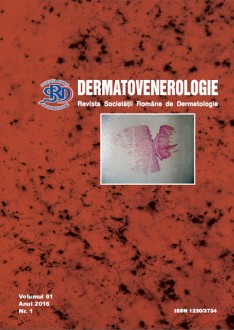Papiloma virusul uman (VPU) reprezinta un agent patogen frecvent asociat cu o multitudine de infectii mucocutanate: orale, respiratorii, conjunctivale si ano-genitourinare.
Incidenta infectiei in sfera genitala si perigenitala la copii este mult mai mica decat la adulti, fiind determinata cel mai frecvent de serotipurile VPU 6 si 11. Desi s-a considerat ca subclasificarea VPU in tipuri cutanate si mucoase identifica topografia specifica a leziunilor, studii recente au evidentiat tipuri de VPU in locatii diferite atat la copii cat si la adulti. Avand in vedere perioada teoretic lunga de latenta a virusului (de la 3 saptamani pana la 8 luni), este dificil de identificat modalitatea infectarii, fiind posibile multiple cai de transmitere: verticala (perinatala), auto- sau heteroinoculare. Diagnosticul de condiloma acuminatum la un copil trebuie sa excluda de fiecare data un posibil abuz sexual.
Prezentam cazurile a 4 copii, care s-au prezentat pentru aparitia unor papule moi, nekeratozice, unele cu aspect conopidiform, localizate genital, perigenital si perianal. Examenul clinic general si local nu a pus in evidenta semne directe sau indirecte ale unui abuz sexual, analizele uzuale fiind in limite normale si nu am identificat alte infectii cu transmitere sexuala.
Tratamentul a fost combinat: crioterapie cu azot lichid (-196°C) sau podofilotoxina (sol. 0,5%) in asociere cu terapia sistemica imunomodulatoare cu Isoprinosine 50 mg/kg corp/zi avand in vedere extinderea leziunilor si riscul mare de recidiva. Varsta acestor pacienti a constituit o alta provocare. Controalele efectuate periodic pe parcursul a 12 luni nu au evidentiat recidive sau aparitia de noi leziuni la nivel genital sau perigenital. Urmarirea pe termen lung este recomandata pentru acesti copii/pacienti, chiar daca nu sunt studii care sa clarifice riscul lor de a dezvolta carcinoame la varsta adulta.


